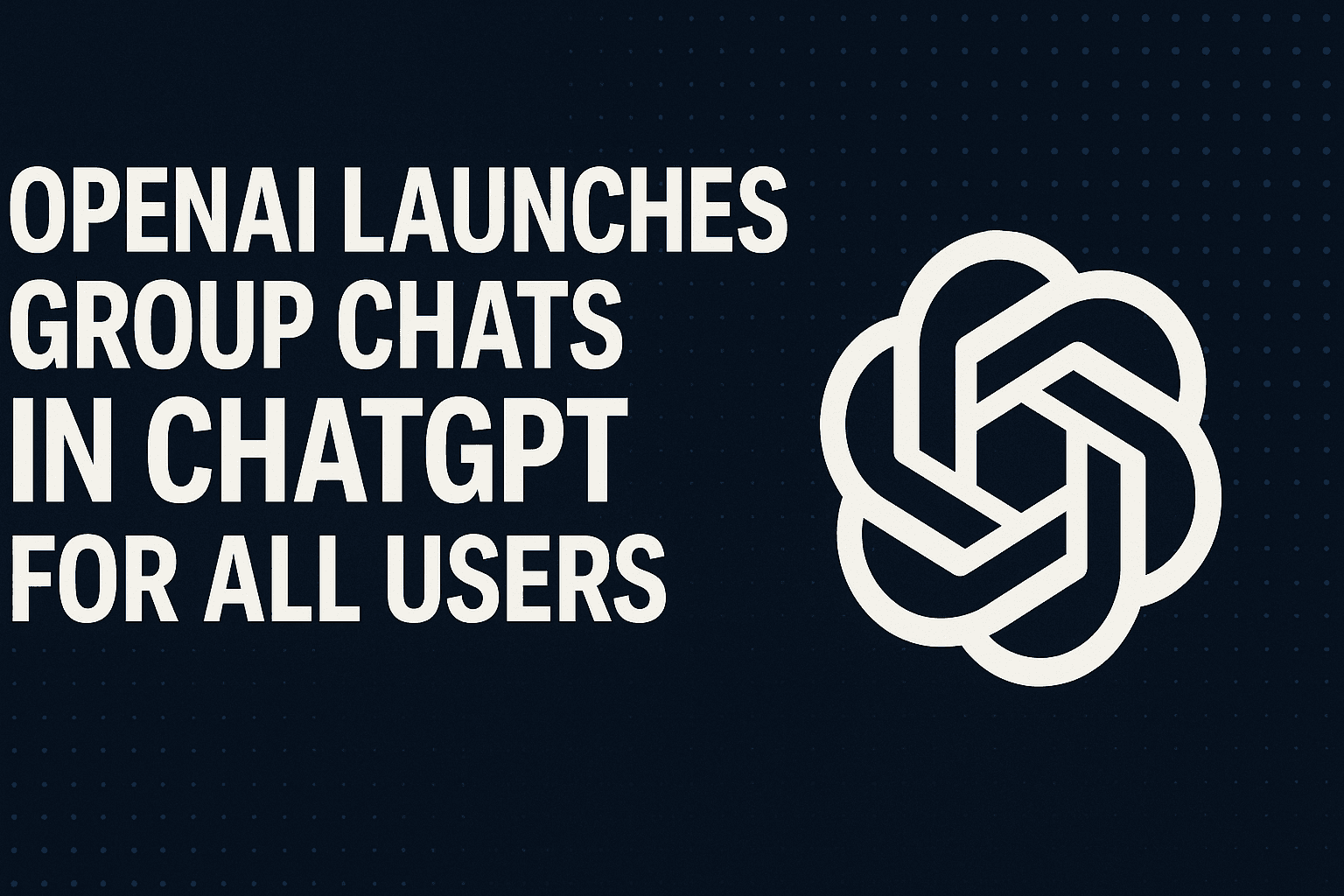ChatGPT’s New Group Chat Feature Is Changing How People Use AI Together
On November 21, 2025, OpenAI officially rolled out Group Chat in ChatGPT for all users — including Free, Go, Plus, and Pro plans. This marks one of the most significant evolution points in public-facing AI tools since the chatbot’s debut in 2022.
Until now, ChatGPT has been primarily a one-on-one experience. The addition of group chats changes the dynamic entirely: AI is no longer just a personal assistant — it becomes a collaborative partner inside shared conversations.
A New Way to Collaborate with AI
In the new group-chat mode, users can invite up to 20 participants into a single conversation. Within this shared space, ChatGPT can answer questions, brainstorm ideas, and even respond with emojis. People can share links, compare drafts, and build ideas together with AI acting as a facilitator or creative engine.
This shift makes AI more “social” than ever before. Tasks that once required passing documents back and forth — planning events, writing proposals, co-editing scripts, or researching topics — can now happen in real time among multiple people and the AI.
Designed with Privacy in Mind
Importantly, OpenAI clarified that group-chat content is not stored in the model’s memory. This is a meaningful point for users concerned about data usage, especially when multiple participants are involved.
However, users are still advised to be mindful of what they share, as the nature of group communication inherently increases exposure to other participants.
Why This Matters for Everyday Users
This update isn’t just a feature enhancement — it signals a turning point in how generative AI integrates into daily life: • AI moves from personal helper to team collaborator. • Group creativity becomes easier: video creators, students, small businesses, and hobby groups all gain new workflows. • Non-technical users gain a smoother entry into shared AI experiences, reducing friction in projects that require collective input.
In short, ChatGPT is becoming not just a tool, but a shared workspace — one where AI stands beside the group, not behind a single user.
